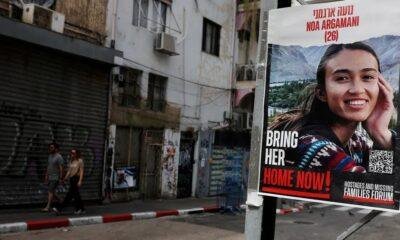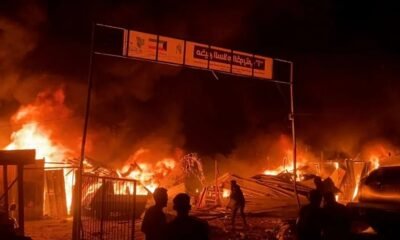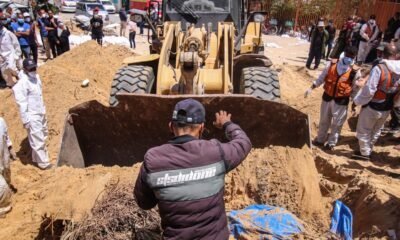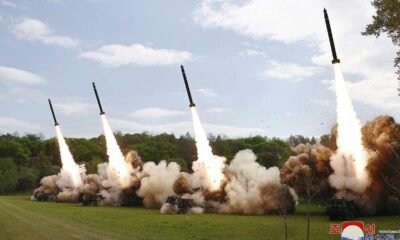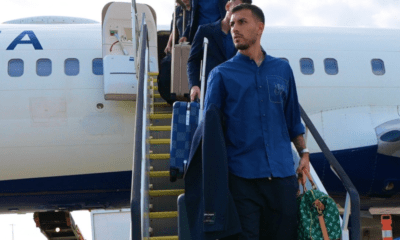INTERNACIONAL
Israeli military tells Palestinians not to return to north Gaza after witnesses say troops killed 5
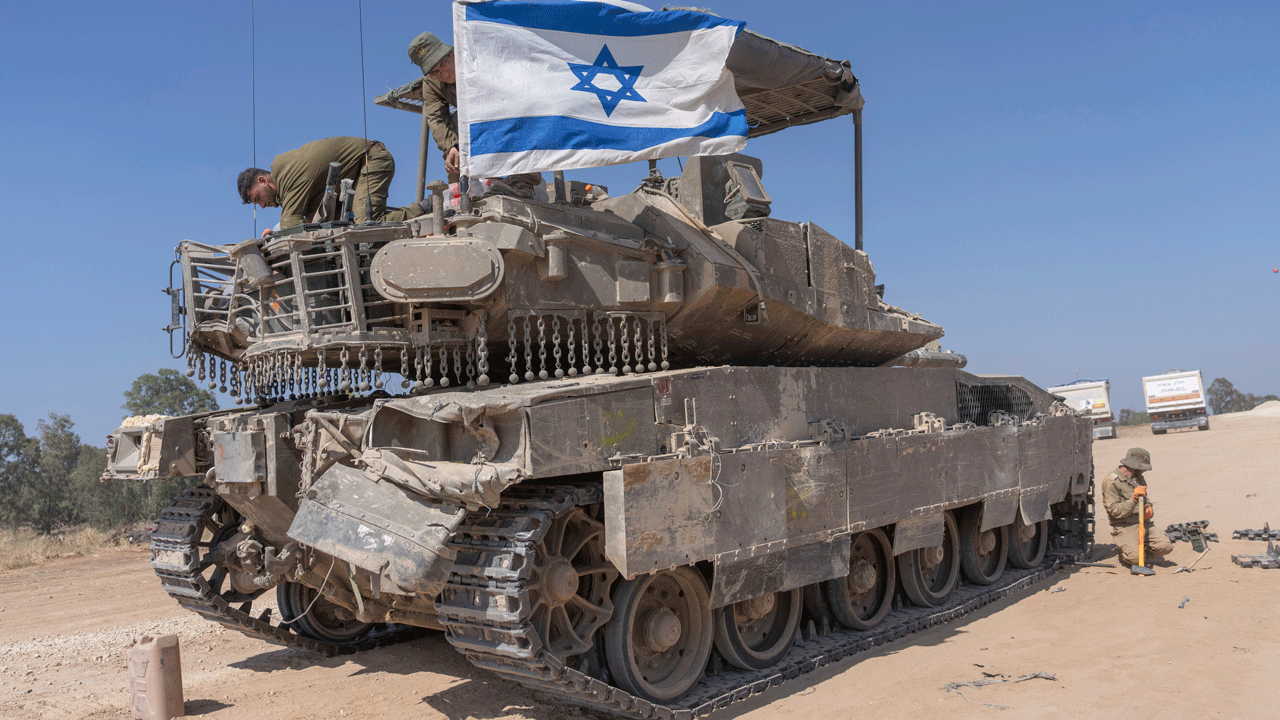
DEIR AL-BALAH, Gaza Strip (AP) — The Israeli military renewed warnings on Monday for Palestinians not to return to northern Gaza, a day after witnesses and medical officials said Israeli troops opened fire and killed five people among throngs of displaced residents trying to walk back to their homes in the devastated area.
Hundreds of thousands of Palestinians were driven from the north after Israeli forces first launched their offensive there soon after Hamas’ Oct. 7 attack on southern Israel. In the months of fighting since, vast parts of the north have been flattened, including much of Gaza City. After months of Israeli restrictions on aid to the north, some 300,000 who remained there are on the brink of famine, according to the United Nations.
ISRAEL DEFENSE MINISTER SAYS HAMAS HAS ‘CEASED TO FUNCTION AS A MILITARY ORGANIZATION’
Still, many Palestinians have wanted to go back, saying they are sick of the conditions they endured in displacement. For months, families have been crammed into tent camps, schools-turned-shelters and homes of relatives throughout the south of the Gaza Strip. Some also fear remaining in Rafah, Gaza’s southernmost town, as Israel says it plans to attack it eventually to root out Hamas.
Late Monday, Defense Minister Yoav Gallant met with top officials to work on preparations for the Rafah invasion, his office said. The international community, including the United States, have voice strong objections to the planned offensive, saying it will endanger the estimated 1.4 million Palestinians sheltered in Rafah.
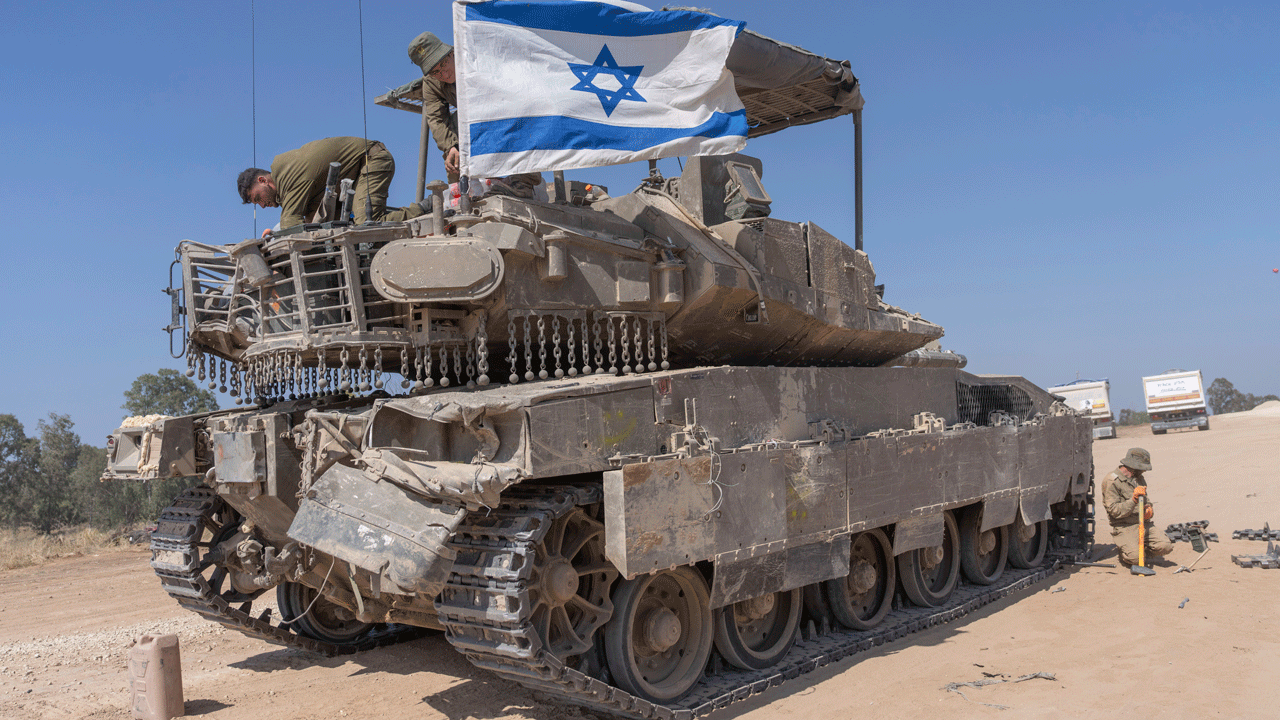
An Israeli soldier attaches an Israeli flag on top of an armored personnel carrier (APC) near Israel’s border with Gaza, in southern Israel, Monday, April 15, 2024. (AP Photo/Ohad Zwigenberg)
Gallant’s office said Monday’s meeting included plans for evacuating civilians and expanding deliveries of food and medical equipment to Gaza.
Israel, which has reduced the number of its troops across Gaza, has repeatedly rejected calls to let Palestinians back to the north of the territory, saying Hamas militants continue to operate there. The military says it has loosened the militants’ control over the north, but it is still carrying out airstrikes and raids against what it says are reorganizing militants. Last month, Israeli troops raided Gaza’s main hospital, Shifa, in two weeks of fighting that left the facility in ruins.
Israeli military spokesman Avichay Adraee wrote on X, formerly Twitter, that Palestinians should stay in southern Gaza because the north is a «dangerous combat zone.»
People appeared to be heeding the new warning, especially after Sunday’s shootings.
On Sunday, thousands of Palestinians tried going up Gaza’s coastal road back to the north, most on foot and some on the backs of donkey carts. Some said they had heard rumors that Israeli troops were allowing people to enter the north.
«We want our homes. We want our lives. We want to return, whether with a truce or without a truce,» said Um Nidhal Khatab, who was among those trying to return home.
Several witnesses said Israeli troops opened fire as the crowds neared checkpoints at Wadi Gaza, the line that the military has drawn separating northern Gaza from the rest of the territory. Five people were killed and 54 wounded, according to officials at nearby Awda Hospital in central Gaza, where the casualties were brought.
The Israeli military had no immediate comment. It was not clear what triggered the shooting.
Farida Al-Ghoul, 27, said that as she and her family neared the checkpoint, she saw a woman rushing back with blood on her telling them not to continue. Ignoring her, they kept going ahead, but soon there was heavy gunfire and shelling around them. She said she saw Israeli troops shooting.
She and another witness said the troops were letting some women and children through to go north but opened fire when some young men tried to pass.
«People on the side were falling down,» al-Ghoul said. «When we saw these scenes, we decided to turn back and never try again.»
Karam Abu Jasser said he, his wife and four children, were among the crowd and they heard gunshots and shelling from up ahead at the checkpoint. «People were panicked, especially women and children. There were many women and children. We ran away,» Abu Jasser said, speaking from a shelter in central Gaza.
He said his family wanted to return home to the Jabalia refugee camp in the north, even though they know their house was hit and damaged.
«We’ll have to live in a tent, but it will be at our home,» he said. «There is bombing everywhere in Gaza. If we will die, it’s better to die in our home.»
The return of the population to northern Gaza has been a key sticking point between Israel and Hamas in negotiations underway for a cease-fire deal that would bring the release of hostages taken by Hamas in the Oct. 7 attack.
Israel wants to try to delay the return to prevent militants from regrouping in the north, while Hamas says it wants a free flow of returnees, a full withdrawal of all Israeli troops from Gaza and an end to the war.
«The permanent ceasefire is the only guarantee to protect our people and stop the flow of blood and massacres,» Izzat al-Risheq, a top Hamas official, said in a statement.
The war has had a staggering toll on civilians in Gaza, with most of the territory’s 2.3 million people displaced by the fighting and living in dire circumstances, often in tents and with little food and no end in sight to their misery. Large swaths of the urban landscape have been damaged or destroyed, leaving many displaced Palestinians with nowhere to return to.
Six months of fighting in Gaza have pushed the tiny Palestinian territory into a humanitarian crisis, leaving more than 1 million people on the brink of starvation.
Famine is said to be imminent in the hard-hit north, where aid has struggled to reach because of the fighting. Israel has opened a new crossing for aid trucks into the north as it ramps up aid deliveries to the besieged enclave. However, the United Nations says the surge of aid is not being felt in Gaza because of persistent distribution difficulties.
The U.N. food agency on Monday said it managed to deliver fuel and wheat flour to a bakery in isolated Gaza City in the north for the first time since the war started.
The conflict started on Oct. 7, when Hamas killed 1,200 Israelis, mostly civilians, in a surprise attack and incursion into southern Israel. Around 250 people were seized as hostages by the militants and taken to Gaza. A deal in November freed about 100 hostages, leaving about 130 in captivity, although Israel says about a quarter of those are dead.
CLICK HERE TO GET THE FOX NEWS APP
Israeli bombardments and ground offensives in Gaza have killed more than 33,700 Palestinians and wounded over 76,200, the Gaza Health Ministry says. Women and children make up around two-thirds of the dead, according to the ministry, whose count doesn’t differentiate between civilians and combatants.
Israel says it has killed over 12,000 militants during the war, but it has not provided evidence to back up the claim.
INTERNACIONAL
Mujeres suicidas: El arma oculta de un grupo terrorista
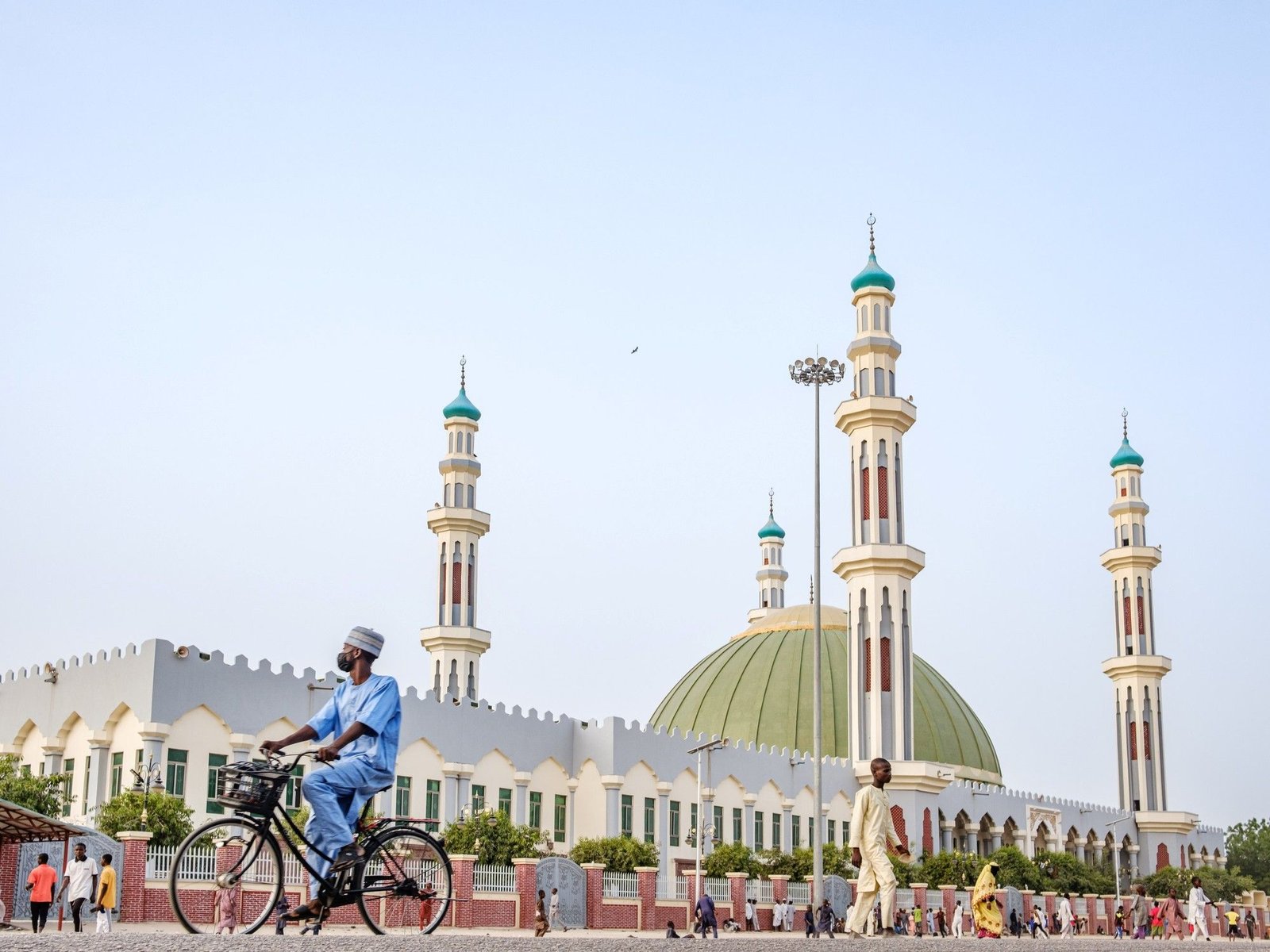
Una mujer sostenía a un bebé mientras detonaba una bomba durante el fin de semana en el norte de Nigeria, matándolos a ambos y al menos a media docena más, dijeron las autoridades locales, poniendo fin abruptamente a una rara pausa en la violencia que ha asolado la región durante más de una década.
A ella se unieron otras dos mujeres suicidas en el estado de Borno, Nigeria, que mataron al menos a 32 personas e hirieron a decenas más en una serie de atentados, según el vicepresidente Kashim Shettima.
Los ataques, dijeron los expertos, demostraron el complejo y mortal papel que pueden desempeñar las mujeres en insurgencias terroristas como Boko Haram.
Los atacantes atacaron tres lugares:
una celebración de boda, un área cercana a un hospital y un funeral para las víctimas del atentado anterior, dijo Barkindo Saidu, director general de la agencia de gestión de emergencias del estado de Borno.
Los ataques tuvieron lugar en la ciudad de Gwoza, una zona anteriormente controlada por Boko Haram durante 15 años.
Aunque ninguna organización se ha atribuido todavía la responsabilidad, los ataques son similares a atentados suicidas anteriores llevados a cabo por Boko Haram, un grupo islamista responsable de decenas de miles de muertes y el desplazamiento de más de 2 millones de personas en la región.
Boko Haram fue noticia en 2014 tras secuestrar a más de 200 colegialas.
Las mujeres son enviadas a la muerte porque “se mimetizan”.
Los grupos armados suelen utilizar a mujeres como atacantes suicidas porque las consideran menos valiosas para la organización y más ventajosas tácticamente, dijeron los expertos.
Ideales
 Víctimas heridas de un atentado suicida reciben tratamiento en un hospital de Maiduguri, Nigeria, el domingo. Foto Joshua Omiri/Associated Press
Víctimas heridas de un atentado suicida reciben tratamiento en un hospital de Maiduguri, Nigeria, el domingo. Foto Joshua Omiri/Associated Press«Las mujeres despiertan menos sospechas y son capaces de penetrar objetivos más profundamente», dijo Mia Bloom, profesora de comunicación en la Universidad Estatal de Georgia y experta en mujeres terroristas suicidas.
Bloom dijo que los grupos terroristas a menudo utilizan a mujeres cuando atacan a civiles o infraestructura cívica porque “se mezclan” y es menos probable que sean percibidas como amenazas.
Algunos grupos también ven a las mujeres como más fáciles de manipular, dijo Bloom, quien ha entrevistado a muchos sobrevivientes de Boko Haram.
Muchas de las mujeres que Boko Haram ha convertido en terroristas suicidas, afirmó, probablemente hayan sido agredidas sexualmente y estén traumatizadas.
 Una niña de una escuela de Chibok con su hijo, liberada hace algunos años por soldados nigerianos, es fotografiada en una casa del consejo del gobierno nigeriano local en Maiduguri, Nigeria. (Foto AP/Jossy Ola, Archivo)
Una niña de una escuela de Chibok con su hijo, liberada hace algunos años por soldados nigerianos, es fotografiada en una casa del consejo del gobierno nigeriano local en Maiduguri, Nigeria. (Foto AP/Jossy Ola, Archivo)Algunas mujeres pueden estar realmente radicalizadas, dijo, pero otras creen que «tienen más posibilidades de sobrevivir siendo bombarderas que casarse con un combatiente de Boko».
El grupo utilizó mujeres atacantes suicidas más de la mitad del tiempo.
Organizaciones terroristas como Boko Haram, Al Shabab y los talibanes han utilizado mujeres como terroristas suicidas, pero Boko Haram las ha utilizado con más frecuencia que otros grupos.
El grupo tiene un historial de secuestro y retención de niñas como rehenes antes de obligarlas a colocarse explosivos y enviarlas a misiones suicidas.
Boko Haram utilizó a niñas con tanta frecuencia en algunas zonas que el gobierno nigeriano lanzó una campaña antiterrorista con imágenes de niños pequeños con detonadores.
Una investigación realizada por el Centro de Lucha contra el Terrorismo en West Point encontró que el grupo utilizó mujeres como atacantes en más de la mitad de sus operaciones, incluidas misiones suicidas desde abril de 2011 hasta junio de 2017.
Muchas de las atacantes eran niñas.
Estilos terroristas
El ex líder de Boko Haram, Abubakar Shekau, asesinado en 2021, era conocido por enviar a niñas y mujeres a misiones suicidas, a menudo en contra de su voluntad.
Cameron Hudson, miembro principal del programa de África del Centro de Estudios Estratégicos e Internacionales, una organización de investigación con sede en Washington, calificó el uso de mujeres por parte de Boko Haram como una «característica» de su militancia que no se ve típicamente en los grupos de africanos occidentales de Malí y Níger, donde las mujeres no suelen ocupar puestos operativos.
Incluso si Boko Haram no se atribuye la responsabilidad del ataque, dijo Hudson, la participación de las mujeres muestra que el terrorismo en la región no está simplemente influyendo en los jóvenes descontentos.
«Comunidades enteras han sido cooptadas en esto», dijo.
«Estamos viendo una insurgencia comunitaria de base amplia».
La región está plagada de violencia.
Durante la última década, el Sahel, una vasta región semiárida que se extiende a lo largo de África occidental y central, ha dado origen a una serie de organizaciones islamistas empeñadas en la insurgencia.
Además de Boko Haram, la Provincia de África Occidental del grupo Estado Islámico también opera en la región.
El estado nigeriano de Borno, que limita con los países vecinos de Chad, Camerún y Níger, ha estado plagado durante mucho tiempo de violencia terrorista, primero a manos de Boko Haram y luego de grupos rivales y disidentes que luchan por el control del territorio.
Los combatientes de Boko Haram tomaron Gwoza en 2014 y Shekau, el líder del grupo en ese momento, declaró un califato antes de que el ejército nigeriano expulsara al grupo en 2015.
Los gobiernos civiles de toda la región, incluido el vecino Níger, han experimentado varios golpes militares en los últimos años.
Pero tanto los civiles como los regímenes militares han tenido dificultades para hacer frente a las amenazas que plantean las insurgencias islamistas.
La degradación ambiental, las privaciones económicas y los Estados extremadamente débiles han convergido para crear patrones de libre circulación a través de las fronteras nacionales, dijeron los expertos, incluida la de los militantes islamistas.
«Incluso si un país fuera capaz de lograr avances, es poco probable que afecte a la amplia franja de esta región», dijo Hudson.
«Lo que estamos viendo aquí es quizás el comienzo de un resurgimiento».
c.2024 The New York Times Company
-
POLITICA2 días ago
Cristina Kirchner reapareció y criticó al Gobierno: “El superávit fiscal es cada vez más trucho”
-
POLITICA24 horas ago
El PRO publicó un duro informe y cuestionó el rumbo del Gobierno: “Hay más interrogantes que certezas”
-
POLITICA2 días ago
Fuerte reclamo de la oposición dialoguista al Gobierno por la crisis económica tras la sanción de la Ley Bases
-
POLITICA2 días ago
Los mercados castigan a Milei, la ayuda de los «dinosaurios» y una anomalía del Senado
-
ECONOMIA2 días ago
Nuevo aumento de naftas y gasoil a partir del 1 de julio
-
POLITICA2 días ago
«No tenemos datos de Loan», admitió Patricia Bullrich desde la zona de rastrillajes para hallar al chico desaparecido en Corrientes

